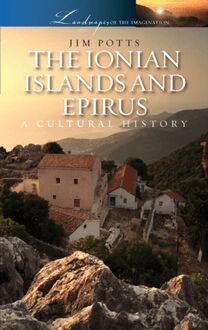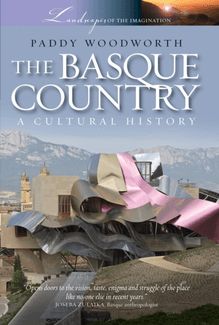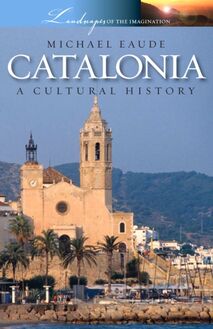-
 Univers
Univers
-
 Ebooks
Ebooks
-
 Livres audio
Livres audio
-
 Presse
Presse
-
 Podcasts
Podcasts
-
 BD
BD
-
 Documents
Documents
-
- Cours
- Révisions
- Ressources pédagogiques
- Sciences de l’éducation
- Manuels scolaires
- Langues
- Travaux de classe
- Annales de BEP
- Etudes supérieures
- Maternelle et primaire
- Fiches de lecture
- Orientation scolaire
- Méthodologie
- Corrigés de devoir
- Annales d’examens et concours
- Annales du bac
- Annales du brevet
- Rapports de stage
La lecture à portée de main
Vous pourrez modifier la taille du texte de cet ouvrage
Découvre YouScribe en t'inscrivant gratuitement
Je m'inscrisDécouvre YouScribe en t'inscrivant gratuitement
Je m'inscrisEn savoir plus
Vous pourrez modifier la taille du texte de cet ouvrage
En savoir plus

Description
Sujets
Informations
| Publié par | Andrews UK |
| Date de parution | 02 mai 2012 |
| Nombre de lectures | 2 |
| EAN13 | 9781908493408 |
| Langue | English |
Informations légales : prix de location à la page 0,0450€. Cette information est donnée uniquement à titre indicatif conformément à la législation en vigueur.
Extrait
Title Page
PROVENCE
A CULTURAL HISTORY
By
Martin Garrett
Signal Books
Publisher Information
First published in 2006 by
Signal Books Limited
36 Minster Road Oxford OX4 1LY
www.signalbooks.co.uk
Digital edition converted and
Distributed in 2012 by
Andrews UK Limited 2012
www.andrewsuk.com
© Martin Garrett, 2006
The right of Martin Garrett to be identified as the author of this work has been asserted by him in accordance with the Copyright, Design and Patents Act, 1988.
All rights reserved. The whole of this work, including all text and illustrations, is protected by copyright. No parts of this work may be loaded, stored, manipulated, reproduced or transmitted in any form or by any means, electronic or mechanical, including photocopying and recording, or by any information, storage and retrieval system without prior written permission from the publisher, on behalf of the copyright owner.
Cover Design: Baseline Arts
Cover Images: John Heseltine Photograpy; Catriona Davidson; Musée d’Orsay, Paris
Design & Production: Devdan Sen
Photographs:
© Rémy Cantin, pp.x, xxix, 2, 14, 24, 35, 66, 77, 80, 138, 142, 158, 174, 207
© Catriona Davidson, pp.86, 93, 96, 170, 180, 201
© iStockphoto.com/Jan Tyler, p.61, p.210; iStockphoto.com/John Said, p.64; iStockphoto.com/Fredrik Schjold, p.105; iStockphoto.com/Josep M. Peñalver, p.120; iStockphoto.com/Luc Gillet, p.154; iStockphoto.com/Virgil Huston, p.160
Landscapes Of The Imagination
The Alps by Andrew Beattie
Flanders by André de Vries
The Thames by Mick Sinclair
The Basque Country by Paddy Woodworth
Catalonia by Michael Eaude
Preface
Roughly speaking it was diamond-shaped, pinpointed in the north by Montélimar and in the south by Marseille, and it followed the whole romantic valley of the Rhône... In the west it stretched beyond Nîmes, in the east as far as Apt.
This map of Provence was tattooed across the conveniently substantial chest of Pepe the bull-owner, or so Lawrence Durrell claims in a piece reprinted in Spirit of Place (1969). I have adopted much the same definition of Provence as Pepe’s: an area that includes places beyond the Rhône that are technically in Languedoc, but traditionally part of Provence—Nîmes, the Pont du Gard, Beaucaire, Aigues-Mortes—and does not include the Côte d’Azur and its hinterland.
This Provence is a rich and varied one, which is why there is no room for the riches of the Riviera. It contains the “edge of the garrigue, windy forlorn and rather Brontë” where Durrell once lived; less forlorn orchards, olive-groves and lavender-fields; the Papal Palace in Avignon— the Versailles of its day; and metropolitan Marseille. All this can also be perceived in many different ways: the essentially optimistic Marseille of Marcel Pagnol, for instance, or the more troubled and complicated modern city of Robert Guédiguian. Perceptions can be affected by sunny or sodden memories (the Alpilles hot and cicada-loud or wet and silent in autumn fog), the maps and books you read and the pictures you look at. Maps may be read from bull-owners’ chests, followed on site, savoured at home as a souvenir or aide-mémoire, or used more coldly as a necessary reference tool. It is much the same, tattooing aside, with books and paintings. If you have read Zola’s account of the Aix-inspired Plassans and then go to Aix, how far do you see the city through his eyes, and how far do you alter Plassans to fit with Aix—or the modern city to fit with that nineteenth-century version? Is it different if you read the book in England or France, Normandy or Provence, French or English? Paintings by Van Gogh and Cézanne condition our sense of Provençal colours, light and forms and may in turn be conditioned by our memories of Provence. It is difficult, too, to see Fontaine de Vaucluse with an “innocent” eye: tourists and the tourist-trade have endlessly relived and reinterpreted what Sir Philip Sidney, in the late sixteenth century, could already call “Petrarch’s long-deceased woes”.
The true Provence, natives and others have often insisted, does exist, as does the ideal inhabitant. But there are competing versions of the ideal. Is the Provençal talkative or dour by nature, a member of a race apart or perfectly integrated with modern French life—or both? (Cézanne intensively painted his native environment but feared that people who paid too much attention to regional traditions would “embalm” Provence.) Various “true” Provences are to be encountered in this book. They have been experienced or constructed by a great range of people: troubadours and mediaevalists, sun-seekers and nineteenth- century poets in felt hats, Petrarch and Laura, the Marquis de Sade and Virginia Woolf, novel-readers, film-goers, cooks and wine-growers, connoisseurs of Roman ruins and Cézanne and Bouillabaisse.
As usual I have received a great deal of support from Helen, Philip and Ed. I should also like to thank Christine L. Corton, John Edmondson, James Ferguson, Robert Inglesfield and Gillian Rogers for their valuable questions, suggestions and practical help. I am grateful, too, to Yvette Souliers of the Maison de Tartarin in Tarascon, the staff of the Musée de l’Empéri in Salon-de-Provence, and the man from Carpentras whose wine I tasted, and with whom I talked about Petrarch, in the summer of 1998, long before working on this book.
Provençal landscape: “the grace of Italy, the harshness of Spain; la grandeur et la mesure” (Pierre Girieud, 1926).
Introduction
Continuities
If Plutarch’s Life of Marius is to be believed, local people developed a practical, if rather macabre, approach to recycling after the Romans’ great victory near Aix in 102 BC: they fenced their vineyards with the bones of slain Germanic warriors.
Continuity—rearranging bones rather than discarding them—has always been a feature of the history of Provence. The name Provence itself derives from the region’s period (temporarily threatened by the invading Teutons) as a provincia romana. And that period did not represent a complete break with the way of life of the Ligurians, Celts and Greek colonists who were there before the Romans. Many already lived in towns and were more easily assimilated to Rome than were the more northerly inhabitants of “long-haired Gaul” who were not conquered until sixty years later. Pliny the Elder, in the first century AD, felt that Provence, with its admirable people and ample resources, was more like Italy itself than a mere province.
After the collapse of Roman power Visigoths, Arabs and Franks struggled for control of southern France. But here, where the influence of Rome had been so powerful, people continued to speak a more strongly Latinate language than in other parts of France. Later in the Middle Ages troubadour poetry increased the prestige of the more literary form of the language. Even after Provençal was superseded by northern French in formal and official contexts in the sixteenth century, related dialects survived in everyday use; from the 1850s Frédéric Mistral and the félibres drew both on oral tradition and the language of the troubadours in their successful campaign to restore Provençal language and Provençal confidence. (On the language see further pp. xviii-xxiv)
In architecture, too, there has been a good measure of survival and continuity. Roman work both influenced, and was sometimes incorporated in, Romanesque. To go back to bones, this time in a mercifully less literal sense, Gustave Flaubert compared the surviving Roman monuments of Arles to the bones of a skeleton, protruding, here and there, from the earth. Parts of the skeleton are still buried, parts have been exposed for archaeological inspection, but many pieces have had a more eventful history: after centuries as fortresses and shanty-towns, the amphitheatres at Nîmes and Arles resumed their ancient function as places of entertainment—gladiatorial sports then, not completely dissimilar bull-fights and bull-games now as well as opera. The Maison Carrée in Nîmes has served as an imperial temple, Christian church, stable, museum, and by-word for architectural harmony. It remains central to the design and the image of the city, enhanced by its symbiotic relationship with Norman Foster’s 1990s Carré d’Art. (See pp.172-3)
On a larger scale, the Rhône has remained a central artery of Provençal commerce, industry and art since prehistoric times, and the distinctive qualities of light on hill and stone which have attracted Cézanne, Van Gogh, and many a less celebrated painter, must surely have had some appeal to much earlier settlers and inhabitants.
Landscape: “Infinitely Complex Chiselling”
In September 1644 John Evelyn and his party came to Aix through a”tract” where “all the heaths or commons are covered with rosemary, lavender, lentisks, and the like sweet shrubs, for many miles together.” Travellers also marvelled at the fertility of more cultivated areas. Approaching Marseille, Evelyn noticed vines, olives, oranges, myrtle and pomegranate, as well as the villas or bastides “built all of freestone, and in prospect showing as if they were so many heaps of snow dropped out of the clouds amongst those perennial greens.” Another seventeenth-century traveller, Mildmay Fane, Earl of Westmorland, found that the same countryside, “deserving the name of gardens rather than of fields, and abounding with golden, russet and purple apples, almost stole away my senses altogether.”
Less smiling
-
 Univers
Univers
-
 Ebooks
Ebooks
-
 Livres audio
Livres audio
-
 Presse
Presse
-
 Podcasts
Podcasts
-
 BD
BD
-
 Documents
Documents
-
Jeunesse
-
Littérature
-
Ressources professionnelles
-
Santé et bien-être
-
Savoirs
-
Education
-
Loisirs et hobbies
-
Art, musique et cinéma
-
Actualité et débat de société
-
Jeunesse
-
Littérature
-
Ressources professionnelles
-
Santé et bien-être
-
Savoirs
-
Education
-
Loisirs et hobbies
-
Art, musique et cinéma
-
Actualité et débat de société
-
Actualités
-
Lifestyle
-
Presse jeunesse
-
Presse professionnelle
-
Pratique
-
Presse sportive
-
Presse internationale
-
Culture & Médias
-
Action et Aventures
-
Science-fiction et Fantasy
-
Société
-
Jeunesse
-
Littérature
-
Ressources professionnelles
-
Santé et bien-être
-
Savoirs
-
Education
-
Loisirs et hobbies
-
Art, musique et cinéma
-
Actualité et débat de société
- Cours
- Révisions
- Ressources pédagogiques
- Sciences de l’éducation
- Manuels scolaires
- Langues
- Travaux de classe
- Annales de BEP
- Etudes supérieures
- Maternelle et primaire
- Fiches de lecture
- Orientation scolaire
- Méthodologie
- Corrigés de devoir
- Annales d’examens et concours
- Annales du bac
- Annales du brevet
- Rapports de stage












